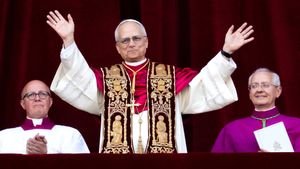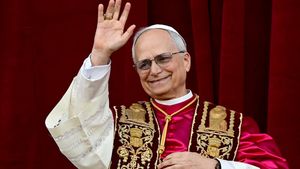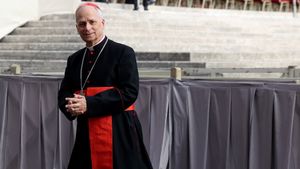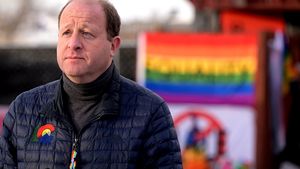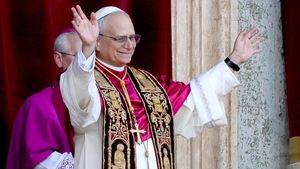As part of this year's iteration of Pacific Standard Time (PST) LA/LA, a Southern California art initiative which focuses on bridging the gap and identifying the overlaps between Los Angelian and Latin American histories, ONE National Gay & Lesbian Archives has put together a show entitled Axis Mundo: Queer Networks in Chicano L.A. Together with the help of curators David Evans Frantz and C. Ondine Chavoya, ONE Archives has divided its show between the ONE Gallery space and the MOCA Pacific Design Center. The show features work by over 40 queer Chicanx artists from the 1960s to the 1990s, and takes as a framework for its critical inquiry the notion of collaboration and community as a means for survival, inclusion, and the recording of history.

Photo by Zak Kelley. Courtesy of The Museum of Contemporary Art, Los Angeles, and ONE National Gay & Lesbian Archives at the USC Libraries
The title of the show will perhaps clarify the general vision for how the works can start a dialogue about collaboration and community. "Axis mundi," as some may already know, refers to the axis connecting Earth, Heaven, and Hell. Here, the curators have changed mundi to Mundo, in reference to Edmundo 'Mundo' Meza, an influential Mexican artist who played a big part in the integration of the gay community in Los Angeles. As yet another important figure who passed away during the AIDS epidemic, Mundo was never one to shy away from controversy. His goal was to create works that instilled in his viewers a strong and urgent need for conversation.
Upon entering the exhibition space, gallery goers are immediately faced with Mundo's work as a kind of appetizer for what is to come. Collaborating with Simon Doonan, Mundo created brazen window displays. For instance, in one display, one can see three mannequins wearing large pig heads. These grotesque window displays served as proof of people's desire to be voyeurs, to watch what is grotesque without having to engage in the scene.

Mundo Meza, Documentation of a window display at Maxfield Bleu, West Hollywood, c. early 1980s. Photo by Mundo Meza. Courtesy of Pat Meza
It's precisely this idea that will guide the show from beginning to end. More specifically, this notion of voyeurism will be the stepping stone for a call to action. With the emergence of Chicano civil rights, and women's and gay liberation movements, artists were granted a large space in which they could meet, interact, and collaborate with peers that shared a similar, if not challengingly opposite, practice. The result was a series of multimedia works-including painting, performance, photography, video, fashion, music, and mail art-that, for the first time, could be used as documentation for the rise, development, and longevity of a whole community of non-white queer artists.
Axis Mundo depicts the many different shades of queer life, starting with the never before seen photographs by Tosh Carillo. The black and white images portray men in various intimate scenarios. They remind us the photographic works of French writer Herve Guibert, or, more contemporaneously, the work of Paul Mpagi Sepuya. The men in the photos are either photographed naked in bed, embracing a lover, or revealing parts of their bodies with no one else in the frame. Guibert and Sepuya deploy similar gestures, though each one of their subjects belongs to different demographics. Here, Carillo's photographs are important in that they contribute to the universalization of the Chicano experience. This is not a group outside of everyday life. Rather, it is a group that is always already embedded in the infrastructures that make up society.

Tosh Carrillo, Arthur, c. 1970s. Archival pigment print from black-and-white 35mm negative, 9 x 14 in. (22.9 x 35.6 cm). Charles Boultenhouse and Tyler Parker Papers. Manuscripts and Archives Division. The New York Public Library, Astor, Lenox and Tilden Foundations.
More visually jarring are works by Ray Navarro and Roberto Gil de Montes. The former, contributing his film Like A Prayer (1990) to the exhibition, combines iconoclastic imagery, namely the artist dressed as Jesus, with Madonna's popular tune, and footage of the "Stop the Church" initiatives during the AIDS epidemic. Advertising for a pro-sex Catholicism, Navarro challenged the Church's behavior toward and rejection of the realities of the epidemic. The film itself is a cacophonous display of overlapping idiocies in the wake of a social disaster. Similarly, in Tongue Tied (1978), de Montes paints a body covered in cloth, thrown in a ditch. In the photographic documentation exhibited in Axis Mundo, the painting lies above and is tied to de Montes' partner's tongue. Here, the artist is asking us what happens when we are forced to stay silent in spite of social disaster? What happens to the communities who have not been given their rightful place in society, to express their creativity, politics, sexuality, and respective vocations?

DIVA TV, Still featuring Ray Navarro from Like a Prayer, 1990. Digitized VHS video, 28 min. Ray Navarro Papers and Videos. ONE National Gay & Lesbian Archives at the USC Libraries
The curators' answer to this question would probably go along the lines of: "Mobilize!" And that's precisely what these artists did-whether that meant using the punk aesthetics of the late 80s and early 90s to denounce the injustices inflicted upon minorities, or creating a physical space in which these groups could gather. It's through the creation of alternative spaces like Los Angeles Contemporary Exhibitions (LACE) that we now have access to the works of countless Chicanx queer artists and it is thanks to the rigorous, respectful, and thorough research of the show's curators that we can begin to speak about a reclamation of history and a genealogy of queer Chicanx artistic practices.

Photo by Zak Kelley. Courtesy of ONE National Gay & Lesbian Archives at the USC Libraries
Axis Mundo: Queer Networks in Chicano L.A. is on view through December 31st at MOCA Pacific Design Center and ONE Gallery in West Hollywood. You can find more information abou this exhibition here.








































